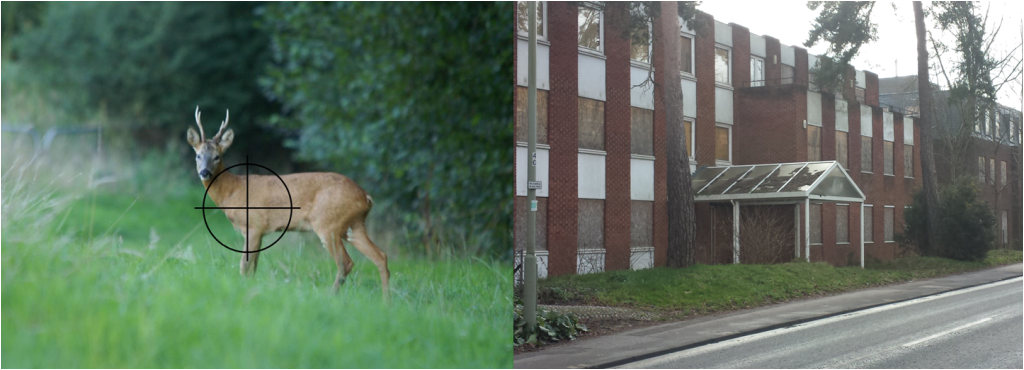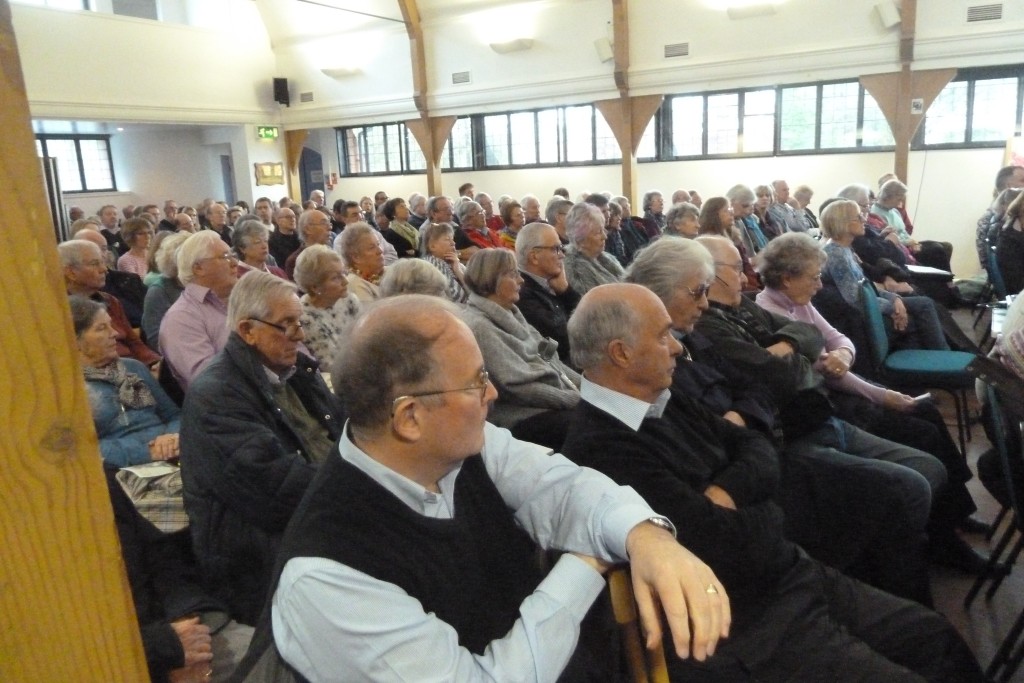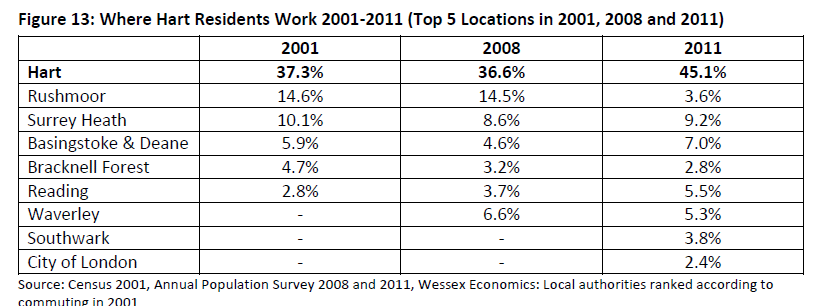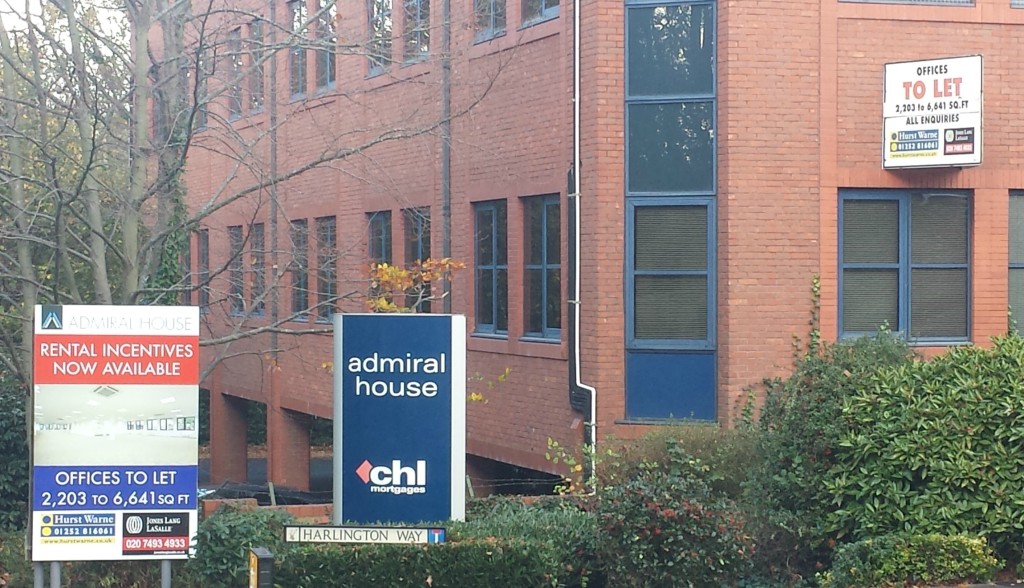
Hart Council Keep Calm and Hide the Facts
Readers will recall that at the Hart Council Meeting last week, senior councillors refused to answer some questions and gave vague and unsatisfactory answers to those questions. The council has now published the full exchange on their website. We give our view on what they really meant below. We ask readers to bear in mind Hart’s Code of Corporate Governance which has as its four key principles:
- Openness: openness is required to ensure stakeholders can have confidence in the decision making and management processes of the Council.
- Inclusiveness: an inclusive approach ensures that all stakeholders and have the opportunity to engage effectively in the decision-making processes and actions of the Council.
- Integrity: is based upon honesty, selflessness and objectivity, and high standards of propriety and probity in the stewardship of public funds and management of the Council’s affairs.
- Accountability: accountability is the process whereby the Council, members and staff are responsible for their decisions and actions regarding all aspects of the Council’s work
Here is the full set of questions and answers, abridged and with our interpretation below in blue:
Question 1: Given that a) in October 2013, you were quoted as saying we would submit a new version of the Local Plan to the Inspector in Autumn 2014 and b) in each subsequent year this has slipped by a further year, with the current LDS indicating a local plan ready for submission in Winter 2016, will you now publish the detailed project plan to support this target, so we can be assured that project management processes have improved?
Answer: It was our intention to proceed with a revised Core Strategy after the withdrawal of the 2013 version. However, as many will well know, the Government changed the nature of Local Plans and we also had to address the issue of a new SHMA to overcome the defects blah….blah….blah…
Blah…blah..blah…The Local Development Scheme is the council’s three-year project plan that identifies which local development documents will be produced, in what order, and when. We do not propose to publish more background information on internal workings because that offers no practical advantage to anyone. There is already proper scrutiny of the Local Plan progress with all members of the Council having the opportunity to be actively engaged.
We also last summer enlisted the support of Chris Dorn to lend project management support. His work has been invaluable and he gave positive and independent feedback to the Hart District Association of Parish and Town Councils.
Finally, we have now full project management arrangements from our neighbours at East Hampshire District Council, who have recent and relevant experience of bringing a local plan through Examination to adoption.
What they really meant: Here’s some blather and vague implausible excuses why we haven’t been able to publish a Local Plan when 82% of Local Councils have managed to do it. There’s no way that we are going to publish the project plan, because we don’t want to be held accountable for any future slippage.
Question 2: Given that in January 2015, HDC commissioned work to test the proposed new settlement and urban extensions with the objectives to test the “deliverability of a new settlement and/or urban extension (ie [sic] suitability, availability and achievability)”, including a land use budget; provide “indicative costing of the major infrastructure items needed”; and consider viability including the “infrastructure requirements of sites to identify likely infrastructure impacts, subsequent costs and potential funding sources”, can you explain if these objectives have been met, and say when the results will be published?
Answer: The current position on testing is set out in the Refined Housing Options Paper. It specifically highlights and comments on where we have got to with the issue of testing. As paragraph 12 we say:
“The testing we decided to undertake is still ongoing as is the testing of all other options. The testing will go on in some form or other right up until we finalise the submission Local Plan. There is still much work to be done, but we have reached a point where we can now ask you if we are on the right track”.
We then go on to summarise on pages 9 and 10 what outcomes have been received from the testing that we have carried out so far.
The outcome of the testing will therefore, inform both the draft Local Plan and will inform the submitted Local Plan in that it will comprise part of the evidence base. All these documents will be published at the appropriate time and everyone will have the right to comment upon them when the Local Plan is independently examined by an Inspector appropriated by the Secretary of State.
What they really meant: No, we haven’t met the objectives. If we actually finished the testing, it would likely show that a new town in Winchfield is not viable and we wouldn’t want to be transparent about that would we?
Supplementary Question: All of the sites identified to make up the new town and urban extensions are listed in the SHLAA as “Not currently developable”, we have no costing of roads, bridges, railway improvements, sewage, sports or community facilities and we have no land use budget that includes SANG, so why are you consulting on a new town that is not deliverable, as well as excluding brownfield sites for the same reason?
Answer: This is part of the consultation. Brownfield sites are only deliverable if the landowner puts them forward for development. Brownfield sites may not be deliverable for other reasons, but once they are put forward as a SHLAA site they can be considered. [Note: Although not recorded in the minutes Cllr Parker did go on to say words to the effect that many of the green field sites put forward were not currently developable because to do develop them would be contrary to current policies and they would look to change their policies as part of the Local Plan]
What they really meant: How dare you ask me for facts? Of course, we will change our policies to get a new town at all costs, just like we changed the questions in the consultation.
Question 3: Given that an FOI request to elicit the evidence to support the assertion made at cabinet (Paper E 5.2) in September 2015, and in Hart news (p2), that brownfield capacity for the district was 1,800 units has failed, are we to conclude that the council and public were misled in September, or will you now produce the evidence and ensure that any new consultation includes a proper stand-alone option for brownfield sites?
Answer: Nobody was misled by this council. The FOI request did not fail.
The Freedom of Information requests were dealt with blah…blah.blah…
Blah..blah..One key point that seems to be missed in the question is that there can be no standalone option for “brownfield sites” because the evidence suggests that there is not enough deliverable ‘brownfield land’ available to meet all our need for new homes because too few suitable sites are being promoted as being available by developers or landowners. Blah…blah…
[Note: Here is the answer given to the FOI request: “With regards to the first request, we do not hold that information.” and also note that none of the other options put forward were able to meet the remaining needs on their own either.]
What they really meant: Of course, it was a mistake to publish the real brownfield capacity, but we’re not going to publish how we arrived at the figure. We are doing our best to erase that from history and push on for a new town.
Question 4: You will recall that I wrote to you on 20 November 2015, highlighting discrepancies between the consultation materials and SHLAA, the most important point being point 4 (and appendix) showing the very different site capacities in the New Homes Booklet compared to the official evidence base, the SHLAA; can you now give an explanation of those discrepancies and will they be corrected before any new consultation is carried out?
Answer: I understand from the Council’s Planning Policy Manager that you have already received
an explanation about the differences between the SHLAA and the New Homes Sites Booklet regarding site capacities (email from the Planning Policy Manager sent on 23rd December 2015).
That response explained that:
“In preparing the consultation papers we drew on not only the SHLAA but also more recent information where it was available. Such information includes the high level site assessments prepared by Adams Hendry and the shortlisting exercise work (available at http://www.hart.gov.uk/Evidence-base ), pre-application plans, recent planning permissions, and any recent changes to site boundaries. These can all influence the sites that are shown in the documents. The SHLAA itself will be updated next year.”
The plan is to publish an updated SHLAA in the summer of 2016 to reflect the best information available at that time including data on annual completions which becomes available around June each year. [Note: I did point out that I had written back to them on 12 January making clear that Point 4, amongst others, had not been answered].
What they really meant: We deliberately make it all very confusing, and who cares if the material we send out to the electorate doesn’t match the official evidence we spent loads of your money to produce and published at the same time as the consultation.
Question 5: Given that the SHMA (section 9.33) calls for 60-70% of our 7,534 housing need (or around 4,900) to be met from 1 & 2-bed properties, can you give a breakdown by number of bedrooms, of the 4,500 or so dwellings built or permitted since 2011 and tell us how many more 1 & 2 bed homes need to be built out of the remaining ~3,000 to be permitted to meet the need expressed in the SHMA? [Note: is has subsequently emerged that the preamble to this question did contain a mistake, and the need for 1 & 2-bed properties is ~3,800 units, but that doesn’t take away the need for Hart Council to measure how well it is meeting the need, nor does it stop the question being answered].
Answer by Chairman: This is a technical research question and does not form part of any current Council workstream. This is not the proper forum to be used to elicit the use of Council resources in pursuit of your own personal research. I say this because the information that you seek is already published.
You can obtain the information by accessing all the planning application details of applications submitted and determined which is published on the online Public Access system.
I would also point out that section 9.33 of the SHMA relates to affordable housing and not general housing mix. It may be you have missed out a few words which fundamentally alters the meaning of your question. [Note: I asked by email immediately after the meeting where this information can be found and have received no response].
What they really meant: You just don’t get it do you? This isn’t about facts or meeting the needs of Hart residents it’s about getting a new town. Of course we’re not going to tell you how well or badly we are meeting the needs of local residents nor information that might suggest that a new town is not the right answer. Where would we be if we were transparent?
Question 6: Given that the SHMA (Figure 10.15) calls for around 2,500 specialist units for the elderly, split into various categories to be built in Hart under the Local Plan, can you tell us how many of these units have been built or permitted since 2011, how many remain to be permitted and what you consider to be the best types of location for these types of accommodation?
Answer: The part of the question seeking statistics is appropriate to an FOI request and thus specifically outside the scope of a question at council. I have therefore asked that this request is handled under FOI rules. You will thus receive a formal response under that protocol. Blah…blah…
Blah…blah…This approach is exactly in accordance with government policy as set out in Paragraph: 003 Reference ID: 12-003-20140306 of the updated September 2015 National Planning Policy Guidance.
What they really meant: Meeting the needs of the elderly is not our priority and you must be joking if you think we are going to publish any information that shows we’re not meeting their needs. We want loads more detached houses in the countryside from a new town and urban extensions.
Supplementary: How can the young who need the affordable 1 & 2-bed dwellings and elderly have confidence in the Local Plan process when the leader doesn’t know what we need to build to meet their needs?
Answer: This will be dealt with under the FOI request.
What they really meant: How many more times do we have to explain, we don’t do facts? This isn’t about meeting the needs of local people. It’s all about getting a new town at all costs.
Question 7: What are the risks that a second consultation “anticipated to be run again from late January”, will be a further waste of Hart residents’ money, when the revised SHMA is due “early in 2016” and a revised employment land review is also being prepared, thus meaning that the evidence base is likely to change significantly during the consultation, leading to a further consultation being required?
Answer: It would be premature to speculate on the outcome of the refresh of the SHMA. Data sets change all the time and all we are looking at is one single snap shot of a combination of changing data sets…blah…blah…
What they really meant: I don’t care about risks and I don’t care about your money, I want a new town. The new SHMA will likely show a big reduction in the housing need so we won’t need to build 3,000 houses for Surrey Heath and Rushmoor and we’ll be able to meet all Hart’s remaining needs from brownfield sites. If that were put to residents they wouldn’t vote for a new town or urban extensions and where would that leave us?
Question 8: Who instigated, who authorised and who will take responsibility for each decision to repeatedly change the materials in the recent consultation part way through?
Answer by Chairman: I am directing that this question is not to be answered. This is because, as Mr Turver knows, it forms the basis of a separate investigation by Overview and Scrutiny and indeed, Mr Turver has been party to representations made pursuant to that investigation. It would therefore be wholly inappropriate to enter into discussions in public without all the facts surrounding the events that resulted in the early curtailment of the Refined Housing Options consultation having first been investigated by Overview and Scrutiny Committee. [Note: Cllr Bailey did make the point that the O&S work is a review, not an investigation and he did not intend that review to act as block on members of the public asking questions].
What they really meant: How dare you ask us to be open, transparent and accountable for our actions?
Supplementary: We’ve heard tonight that you have failed with the last consultation, haven’t got a grip on the timeline, project management or the quality and content of the outputs, isn’t it time that you and the rest of the Local Plan Steering Group did the decent thing and resigned?
Answer: I do intend to do the decent thing and deliver the local plan.
What they really meant: We can’t have someone in charge who might actually look at the evidence and try and meet the real needs of Hart residents can we?












































